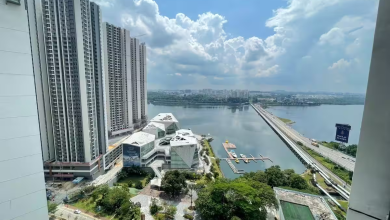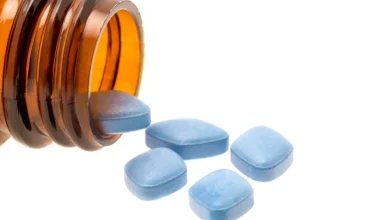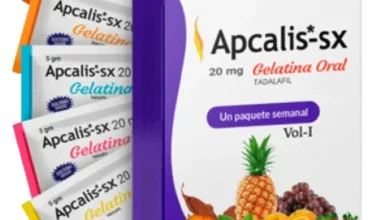How Long Do the Results of Spider Vein Treatment Last?
How Long Do the Results of Spider Vein Treatment Last?

1. Introduction
Spider veins, also known as telangiectasias, are small, dilated blood vessels that appear close to the surface of the skin. Often found on the legs and face, spider veins are typically blue, red, or purple and have a web-like appearance. For many, spider veins are not just a cosmetic concern but can also lead to discomfort such as itching, burning, or aching in the affected areas.
Thanks to advances in medical treatments, spider veins can be effectively treated. However, one of the most frequently asked questions by those seeking treatment is: “How long do the results last?” This article delves into the different spider vein treatments, factors that affect their longevity, and tips on how to maintain the results for as long as possible.
2. Understanding Spider Veins
What Are Spider Veins?
Spider veins are smaller, less severe forms of varicose veins, and they develop when the valves inside the veins fail to function properly. This allows blood to pool and causes the veins to swell and become visible under the skin. While spider veins can develop anywhere, they are most commonly found on the legs and face.
Causes of Spider Veins
Several factors contribute to the development of spider veins, including:
- Genetics: If your family members have spider veins, you’re more likely to develop them.
- Hormonal Changes: Pregnancy, menopause, and the use of birth control pills can all contribute to the formation of spider veins.
- Prolonged Standing or Sitting: Jobs or activities that require extended periods of standing or sitting can increase the pressure in the veins, leading to spider veins.
- Age: As you age, the wear and tear on the veins increases, and the likelihood of developing spider veins rises.
- Sun Exposure: Ultraviolet (UV) radiation can cause damage to the skin, weakening blood vessels and resulting in spider veins, particularly on the face.
3. Spider Vein Treatment Options
There are several effective treatments available for spider veins, each with varying degrees of longevity. These treatments aim to eliminate or reduce the appearance of the veins and alleviate any discomfort associated with them.
Sclerotherapy
Sclerotherapy is one of the most commonly used treatments for spider veins. During this procedure, a medical professional injects a solution directly into the affected veins. This solution causes the veins to collapse and eventually be absorbed by the body. The results are often visible after a few weeks, with full results taking up to six months.
Laser Therapy
Laser therapy uses intense pulses of light to heat and destroy the affected veins, causing them to gradually fade away. This non-invasive procedure is particularly effective for treating smaller spider veins and those found on the face. Multiple sessions may be required to achieve optimal results.
Radiofrequency Ablation
Radiofrequency ablation (RFA) is a minimally invasive procedure that uses radiofrequency energy to heat and close off the affected veins. This treatment is typically used for larger varicose veins but can also be effective for spider veins in certain cases.
Vein Stripping
Vein stripping is a more invasive treatment option, usually reserved for severe cases. It involves surgically removing the affected veins. Though this procedure is less commonly used for spider veins, it may be recommended if there are larger varicose veins present as well.
4. Factors Affecting the Longevity of Treatment Results
Type of Treatment
Different treatments have varying lifespans when it comes to results. Sclerotherapy, for example, can provide long-lasting results, but follow-up treatments may be needed every few years. Laser therapy, while effective, may require more frequent touch-ups, especially if new spider veins develop over time.
Lifestyle Factors
Your lifestyle can significantly impact how long the results of spider vein treatment last. Factors such as prolonged standing, lack of physical activity, or excessive weight can lead to the recurrence of spider veins. Smoking and excessive alcohol consumption can also contribute to vascular health problems, which may hasten the reappearance of spider veins.
Age and Genetics
Unfortunately, genetics play a crucial role in the development of spider veins. If you are genetically predisposed to them, you may need to undergo treatment more frequently to maintain results. Age is also a significant factor, as vein elasticity decreases over time, leading to the formation of new spider veins.
5. How Long Do Results Typically Last?
Immediate Results
In some cases, patients may notice immediate improvement following treatment, especially with sclerotherapy or laser therapy. However, it’s important to note that the treated veins will often appear bruised or discolored before they begin to fade completely.
Short-term Results
Within a few weeks to a few months after treatment, the treated spider veins will generally disappear. The initial results of sclerotherapy or laser treatment can last anywhere from six months to several years. However, the likelihood of new spider veins forming in the same or nearby areas remains.
Long-term Results
While the treated spider veins are permanently destroyed, the formation of new spider veins over time is not uncommon. Some patients enjoy results that last for years, while others may see new spider veins develop sooner, particularly if they have risk factors such as prolonged sitting or standing, genetic predisposition, or hormonal imbalances.
6. Maintaining Results: Tips and Best Practices
Although spider vein treatment results can be long-lasting, it’s essential to take certain steps to prolong the effectiveness of the treatment and prevent new spider veins from forming.
Healthy Lifestyle Choices
Maintaining a healthy lifestyle can make a significant difference in prolonging the results of spider vein treatments. Regular exercise helps improve circulation and reduce the likelihood of blood pooling in the veins. Maintaining a healthy weight also minimizes pressure on the legs, reducing the chances of new spider veins developing.
Compression Garments
Wearing compression stockings or socks can provide support to the veins and prevent blood from pooling. This is particularly helpful if your job requires prolonged standing or sitting.
Follow-up Treatments
Depending on the treatment method, follow-up treatments may be necessary to maintain the results. Sclerotherapy patients, for example, may need additional treatments every few years to address any newly formed spider veins. Laser therapy patients might also require touch-up sessions, especially for more resistant veins.
7. Conclusion
Spider vein treatments offer effective solutions to both the cosmetic and physical discomfort caused by spider veins. While the results of treatments such as sclerotherapy and laser therapy can last for years, the formation of new spider veins over time is a possibility, especially if risk factors like genetics, lifestyle, and age are present.
To maximize the longevity of your spider vein treatment results, adopting a healthy lifestyle, using compression garments, and scheduling follow-up treatments as needed are essential. While no treatment can guarantee a permanent solution, the combination of effective medical intervention and personal care can help maintain smooth, vein-free skin for an extended period.









